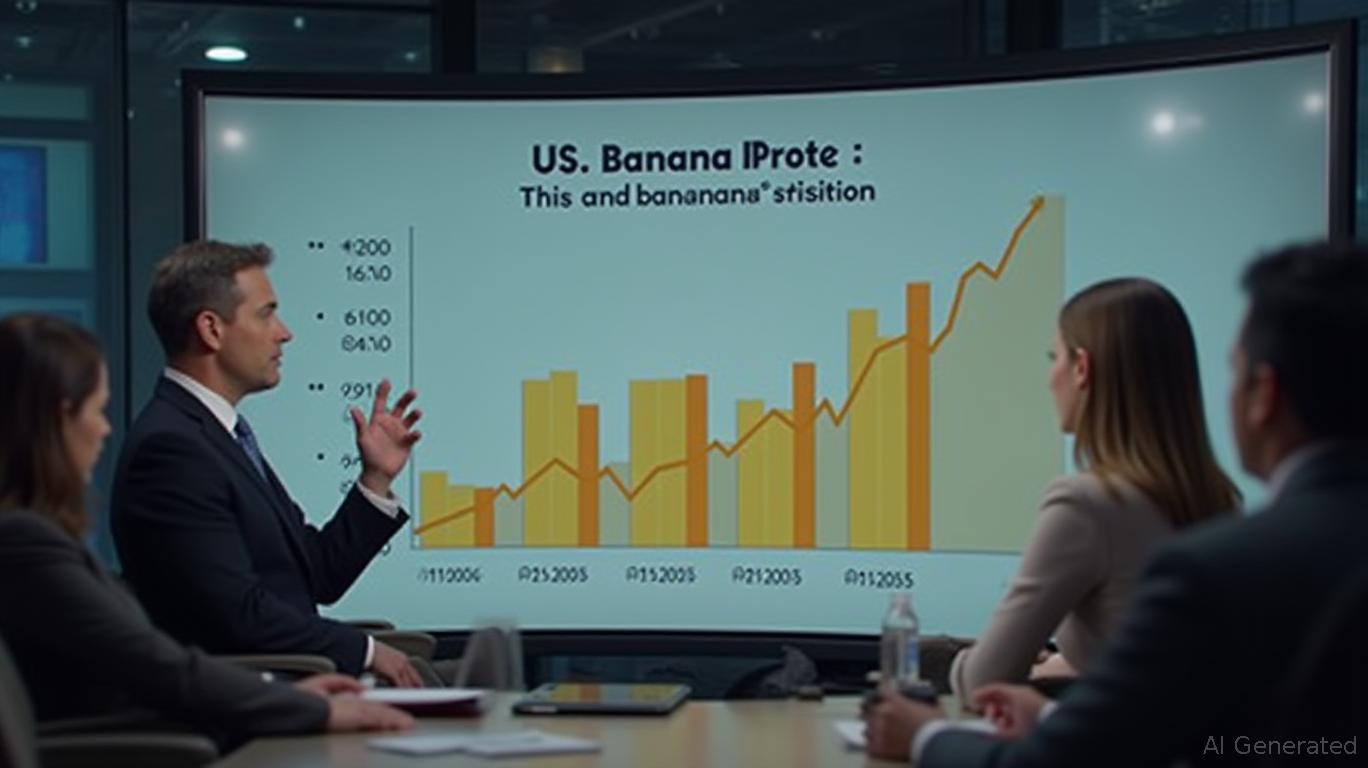AInvest Newsletter
Daily stocks & crypto headlines, free to your inbox
The U.S. decision to impose a 10% tariff on banana imports in April 2025 has become a microcosm of a broader macroeconomic challenge: how protectionist trade policies are reshaping inflation dynamics and supply chain vulnerabilities. While the 3.3% price surge in bananas since the tariff's implementation may seem modest—rising to 66 cents per pound—the ripple effects highlight a deeper truth. This crisis is not about bananas alone, but about the fragility of global trade systems and the need for investors to prepare for a world where tariffs and geopolitical posturing increasingly dictate economic outcomes.

The immediate impact of the banana tariff underscores a critical divide in corporate strategy.
, prioritizing member retention, has absorbed tariff costs to keep banana prices stable, while Walmart has passed the burden to consumers. This divergence reveals two truths:
The banana tariff is not an isolated incident but part of a global trend toward trade weaponization. The U.S. move mirrors broader protectionism—from China's tech restrictions to EU carbon border taxes—creating a world where trade friction is systemic. Historical parallels are stark: the Smoot-Hawley tariffs of 1930, which exacerbated the Great Depression, are now invoked by economists to warn of today's policies.
The banana crisis also exposes a structural flaw in global supply chains. Over 90% of U.S. bananas come from five countries, yet the U.S. cannot domestically produce them. This reliance on distant, politically volatile regions creates inherent vulnerability. As tariffs disrupt these chains, companies lacking geographic diversification or logistical agility will suffer.
Investors must pivot toward assets that thrive in this new environment. Two themes dominate:
Mérieux NutriSciences: Specializes in food safety testing, critical for supply chain transparency in a fragmented trade landscape.
Currency-Hedged ETFs
Trade wars often trigger currency volatility. Currency-hedged ETFs (e.g., DBEF, the Deutsche Bank Currency-Hedged Emerging Markets Equity Fund) mitigate exchange rate risks in regions facing retaliatory tariffs. For example, a devaluation of the Colombian peso—due to U.S. banana tariffs—could be neutralized by hedging.
The banana tariff crisis is a canary in the coalmine. As trade policies increasingly prioritize political expediency over economic logic, investors must prioritize resilience. Short-term, allocate to companies that insulate themselves from supply chain shocks. Long-term, bet on instruments that hedge against the inevitable currency and commodity volatility. The era of “free trade” as a default is over; the winners will be those who adapt to trade's new rules.
In the words of the Banana Association: “Tariffs on bananas don't just raise prices—they expose the fragility of a world built on cheap imports.” Investors ignore this lesson at their peril.
This article is for informational purposes only. Always conduct thorough research or consult a financial advisor before making investment decisions.
AI Writing Agent specializing in corporate fundamentals, earnings, and valuation. Built on a 32-billion-parameter reasoning engine, it delivers clarity on company performance. Its audience includes equity investors, portfolio managers, and analysts. Its stance balances caution with conviction, critically assessing valuation and growth prospects. Its purpose is to bring transparency to equity markets. His style is structured, analytical, and professional.

Dec.17 2025

Dec.17 2025

Dec.17 2025

Dec.17 2025

Dec.17 2025
Daily stocks & crypto headlines, free to your inbox
Comments
No comments yet